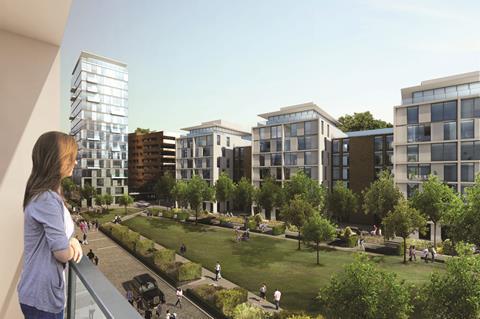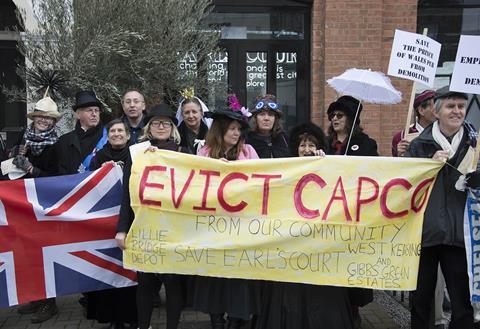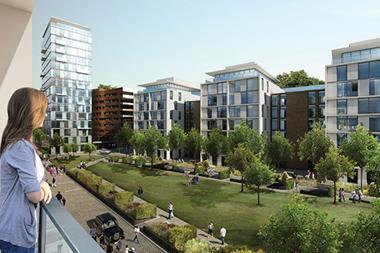Up until this week, the relationship between Capital & Counties (Capco) and the London Borough of Hammersmith & Fulham (LBHF) had been tense but civil. It is not so civil now.

After details emerged on Monday of a letter the Labour leader of the west-London council had sent to residents of the two housing estates at the heart of Capco’s controversial Earls Court development, the relationship between the two sides deteriorated, with accusations and denials flying between them.
In his letter to residents of the social housing estates, LBHF’s leader Stephen Cowan called on Capco to stick to the agreement he claimed was made during a meeting on 2 March between himself and Capco’s chief executive Ian Hawksworth.
In the letter, Cowan claimed Hawksworth agreed to return the West Kensington and Gibbs Green estates, Gibbs Green School and Farm Lane to the council in return for the £75m Capco had already repaid the council.
Furious response
However, a spokeswoman for Capco denied any such agreement had been struck and said the allegation in Cowan’s letter was untrue. Did Capco accuse Cowan of lying? Not directly.
“He may have been mistaken about what was said during that meeting,” says a source close to Capco. Nevertheless, Cowan took Capco’s denial as if he had been accused of lying, and it sparked a furious response from the council leader.
Cowan, who became council leader when Labour took control of the borough in June 2014 after the previous Conservative administration had approved Capco’s plans for the site and the demolition of the two housing estates, is now threatening to publish what Capco claims are privileged legal documents to prove Hawksworth did agree to hand the estates back.
A spokesman for Cowan says: “Those letters will show that, as the letter from the council’s leader states, Hawksworth did indeed agree it would be in the best interests of the council and Capco to return the estates to council ownership in exchange for return of the monies paid to the council.
“The council’s leader and Ian Hawksworth shook hands on this.”
While the council would not comment further on the details of the documents, a source familiar with LBHF’s position says they will prove that not only did Hawksworth agree to hand back the two estates, the Gibbs Green School and Farm Lane to the council during the 2 March meeting, but that there were several other meetings between representatives of the two parties to progress the handover.

The source adds that Hawksworth had initially said the handover would take up to nine months, but that Cowan was able to persuade him that it could be far quicker, and the council could draw up the paperwork in a matter of weeks.
Capco would not add to a statement it made earlier this week in reaction to Cowan’s letter. However, a source close to the property group, which also owns swathes of Covent Garden in London, says it had made it clear for some time that it was prepared to negotiate with the council over the future of the estate.
Splitting up
There are some who believe Capco would be better off without the troublesome Earls Court project, which has suffered writedowns of more than £450m since 2016, and would benefit more from focusing on its Covent Garden portfolio. Capco itself is considering a demerger to split its two core holdings into two separately listed businesses.
Whatever Capco decides to do with Earls Court, Cowan appears to have no intention of making life easier for Hawksworth and his team.
As Property Week revealed today, Cowan is now beginning a legal process that could see the council go all the way to the courts in an effort to prove the decision of the previous Conservative administration to sell Earls Court to Capco in September 2012 for £110m was not legal.
Last month, Cowan managed to pass a motion at a meeting of the full council to pursue legal avenues to question the validity of the original sale.
In five short days, the battle for Earls Court has become a fully fledged declaration of war – a war in which both sides are so entrenched it is difficult to believe there will not be serious casualties.
Earls Court: council launches legal investigation into Capco estates sale in bid to overturn deal
- 1
- 2
- 3
 Currently reading
Currently readingCouncil declares war on Capco over Earls Court estates
- 4
- 5
- 6


































No comments yet